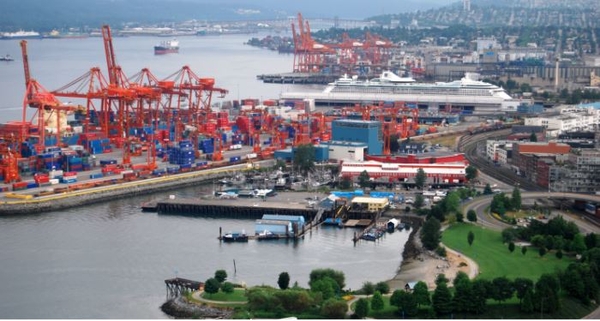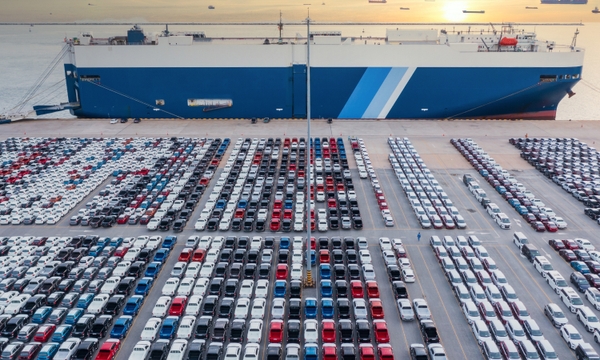10 Largest Ports in North America
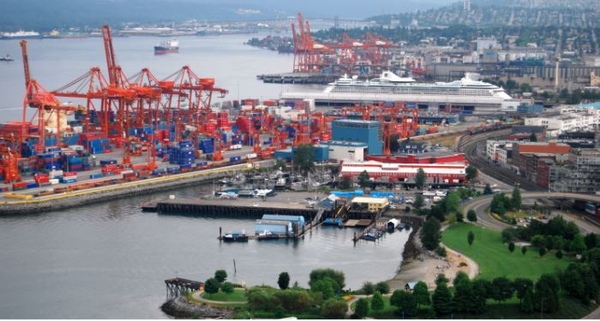
Alert: Please be aware of significant disruptions impacting shipping routes to and from Baltimore due to the Key Bridge collapse. Read more about the impact of inbound and outbound shipments to Baltimore on our dedicated page and check out our expert's recommendations here.
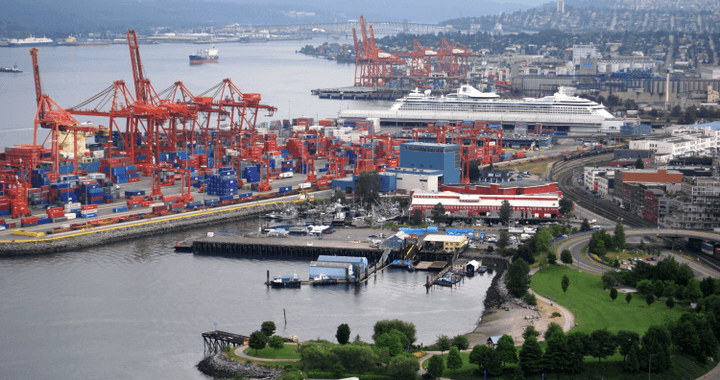
Other than handling goods vital to the economy, from fuel to food, ports are also growth accelerators. They generate hundreds of thousands of employment opportunities and are critical sources of national and state taxes in North America.
A port’s contribution to the economy depends on its size and the volume of cargo it handles. Therefore, our list of the ten largest ports in North America should be seen as a list of some of the largest centers of economic activity in America and Canada.
1. Los Angeles
Also known as America’s Port, the Port of Los Angeles is the largest port in North America. Spread over 7500 acres, it handles 20 percent of all incoming cargo for the United States. Its container volume was 10.7 million twenty-foot equivalent units (TEU) in 2021, a 16.30 percent increase over the 9.2 million TEU from 2020.
The port of Los Angeles is one of the busiest in the world and is the primary port for the region. It handles a large volume of trade between the United States and Asia.
The port of Los Angeles comprises several different terminals used for different types of cargo. It is also home to a large number of warehouses and storage facilities. The port is constantly busy with ships coming in and out and containers being loaded and unloaded.
Total size: 7500 acres
Cargo terminals: 25
Vessels handled: 1867
Annual cargo tonnage: 222 million metric revenue tons
Annual cargo value: $294 billion
Leading trading partners: China and Hong Kong, Japan, South Korea
Direct and indirect employment: 1.6 million all over the US
2. Long Beach
The second biggest port on our list, the Port of Long Beach, is less than 30 kilometers from the Los Angeles Port. Founded in 1911, it’s today one of the biggest gateways for trade and a major hub for container shipping traffic between Asia and North America. In addition to being a key point of entry for imported goods, the port also handles a large volume of exports bound for destinations around the globe.
The Long Beach Port was one of the first to adopt eco-friendly policies to reduce its impact on the environment, through measures such as the Green Port Policy.
Total size: 3200 acres
Cargo berths: 80
Annual cargo tonnage: 78.2 million metric revenue tons
Annual container value: $180 billion
Direct and indirect employment: 370,000
Known for: Environment-friendly policies, including, the implementation of the Clean Air Action Plan
3. New York and New Jersey
The New York and New Jersey Port is the biggest port on the East Coast, receiving 72 percent of the first port of calls. It handles over 7.4 million containers annually and comprises three main facilities: the Port Authority Marine Terminal, the Brooklyn Port Authority Maritime Facility, and the Newark Bay Extension. Encompassing waterways in the New York-New Jersey Estuary, the port has two foreign-trade zones in it.
**Container volume:**7.4 million TEUs
Total containers: 4.2 million
Annual cargo tonnage: 74 million metric revenue tons
Annual container value: $205 billion
Leading trading partners: China, India, Germany
4. Georgia Ports (Savannah and Brunswick)
When combined, two of the four ports in Georgia - Savannah, and Brunswick - take the fourth spot in our list of the largest ports in North America. They offer a variety of services and facilities for shipping, including container terminals, breakbulk terminals, and cruise ship terminals.
The largest single-terminal container facility in the country is in the Port of Savannah, while Brunswick is known as a hub for automobile imports that is used by more than twelve auto manufacturers. Both ports are managed by the Georgia Ports Authority.
Container volume: 4.35 million TEU in Savannah alone
Deepwater terminals: Garden City terminal (1200 acres), Ocean terminal (200 acres)
Primary goods: Automobiles, heavy machinery, agricultural products
5. Seattle-Tacoma
The Port of Seattle-Tacoma is one of the busiest ports in the United States. It is located in Washington state on Puget Sound. The port handles a large amount of container traffic and is a primary gateway for trade with Asia.
The Port of Seattle-Tacoma is the result of the 2014 merger of the two Washington ports. In 2015, it became the third-largest in terms of cargo handling in America. A significant part of the regional economy, the port did $9.7 billion of business in 2017. To modernize its Terminal 5, the port undertook a $500 million investment in 2019.
Container volume: 3.7 million TEUs
Total containers: 4.2 million
Primary exports: Oilseeds and grains, machinery, computers
Direct and indirect employment: 151,400
6. Houston
When you consider foreign waterborne tonnage, the Port of Houston is the busiest in America. The 50-mile-long port has over 200 public and private terminals. The largest port in the Gulf Coast, the Houston Port handles 52 percent of project cargo among ports in the region. One of its current focus areas is the NeoPanamax expansion.
The port is a major center for maritime commerce and is home to nearly 200 private companies within its confines. It handles more than 200 million tons of cargo annually and is responsible for more than $179 billion in economic activity yearly. The port is also a major employer, supporting more than 1.2 million jobs in Houston.
Vessel calls: 8200
Barges: 215,000
Annual cargo tonnage: 247 million metric revenue tons
Annual cargo volume: 1.6 million TEUs
Leading products: Petroleum and petroleum products
Economic impact on the state: $339 billion
Direct and indirect employment: 3.2 million
7. Oakland
The first terminals for container ships were built here. On the Pacific Coast, it was the first important port. Although it tends to be overshadowed by its big brothers, the Port of Oakland is ranked among the top three gateways on the West Coast. Located in Oakland, California, on San Francisco Bay, the Port of Oakland encompasses nearly 2,000 acres of waterfront land.
The port handles 99 percent of all containerized goods that move through Northern California. It handles more than two million containers annually and is a major gateway for trade with Asia.
Vessel arrivals: 1775
Annual container volume: 2.5 million TEUs
Leading trading partner: Asia
8. South Carolina
The ports of Georgetown and Charleston together form the South Carolina ports. The importance of the port to the economy of South Carolina can be gauged by the fact that it directly or indirectly provides 10 percent of all jobs in the state, that too, offering wages that are 32 percent higher than the state average.
The port has a strong focus on containers, handling over two million TEUs (twenty-foot equivalent units) each year. The port is also a central hub for importing and exporting automobiles and bulk commodities such as coal and forest products.
Annual cargo volume: 1.29 million TEUs
Foreign ports served: 100
Economic impact: $63.4 billion
Direct and indirect employment: 187,200
9. Port Metro Vancouver
In 2008, the largest port in Canada, the Port of Vancouver, merged with the North Fraser Port Authority and Fraser River Port Authority to form Port Metro Vancouver. Spread over 3700 acres, the port is as big as the next big five ports in Canada and is expected to grow at an annual rate of 3.5 percent.
The Port of Vancouver is the largest and busiest in Canada, handling over 135 million tonnes of cargo each year. Located in British Columbia on the country's west coast, the port is a gateway for trade between Canada and Asia.
Major terminals: 25
Vessels handled: 2677
Annual cargo tonnage: 147 million metric revenue tons
Container volume: 3.4 million TEUs
Annual cargo value: $240 billion CAD
Direct and indirect employment: 115,300
Impact on GDP: $11.9 billion
10. Virginia
The Port of Virginia is one of the busiest and most important seaports on the East Coast, handling millions of tons of cargo each year. The port is located in the Hampton Roads region of Virginia, at the confluence of the Chesapeake Bay and the James River.
Growing at an annual rate of 2.6 percent for five years is one of East Coast’s busiest ports, the Port of Virginia. With multinationals like Amazon and Navien setting up operations in the state, it can only get busier at the port.
Norfolk, Portsmouth, Newport, Virginia International, and Virginia Inland are the major terminals here. With regulators approving the Georgia-Virginia agreement between the ports of Savannah and Virginia, the port is expected to make significant benefits from the combined economies of scale.
Major terminals: 5
Container volume: 3.7 million TEUs
Direct and indirect employment: 397,000
Economic impact on the state: $92 billion
Know Your North American Freight Gateways
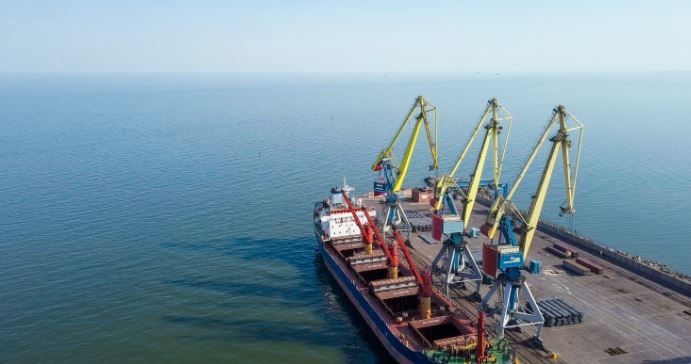
Does your business trade internationally between North America and other continents? If so, your goods will be likely to pass through one or more of these top-10 container ports. Apart from being notable for their economic contribution to Canada and the United States, it’s always good to know a little about the facilities that will handle your ocean freight.
That’s why we like to share insights like those provided here. Remember to keep an eye on our Knowledge Series of articles, as we regularly add new guides and informative posts to help you navigate the world of ocean and air freight shipping.
